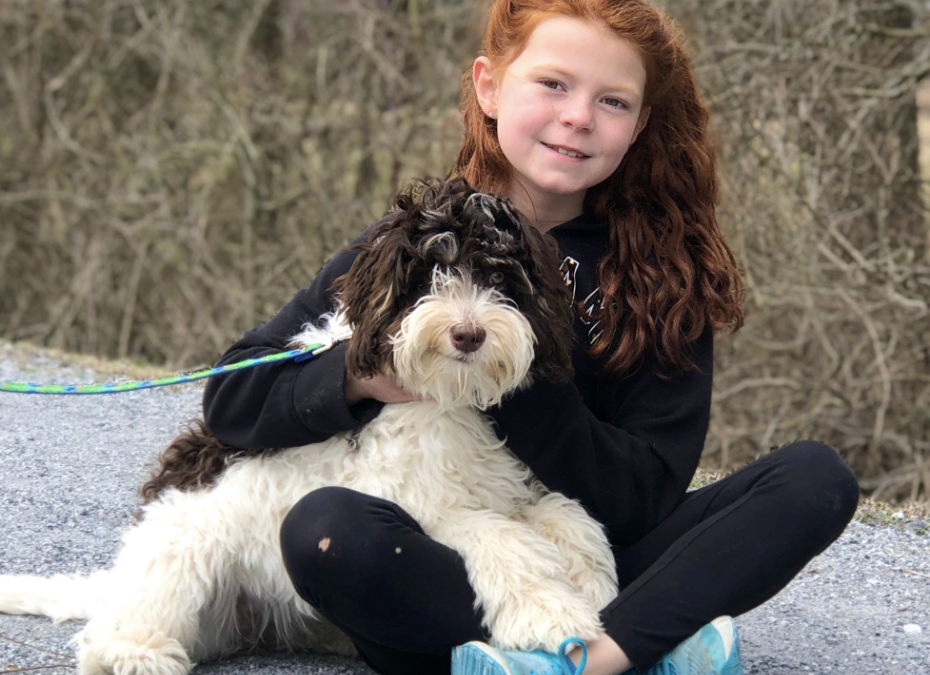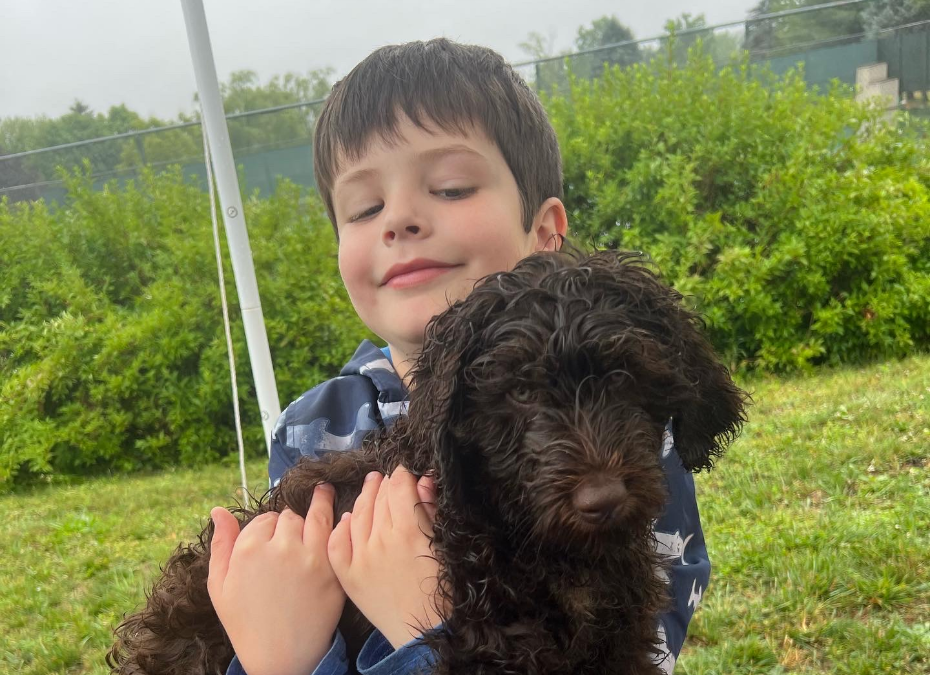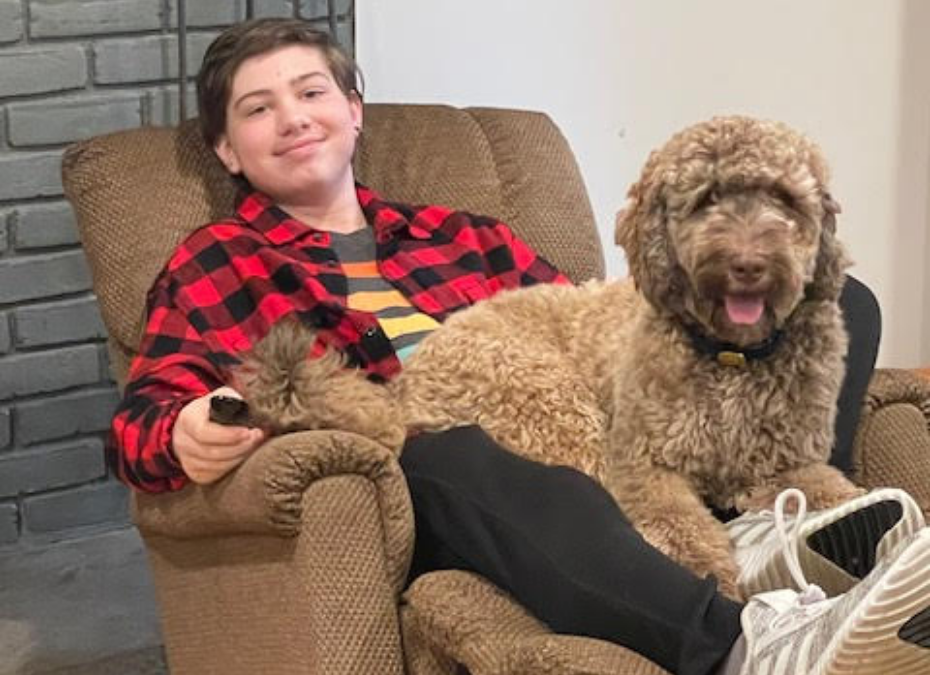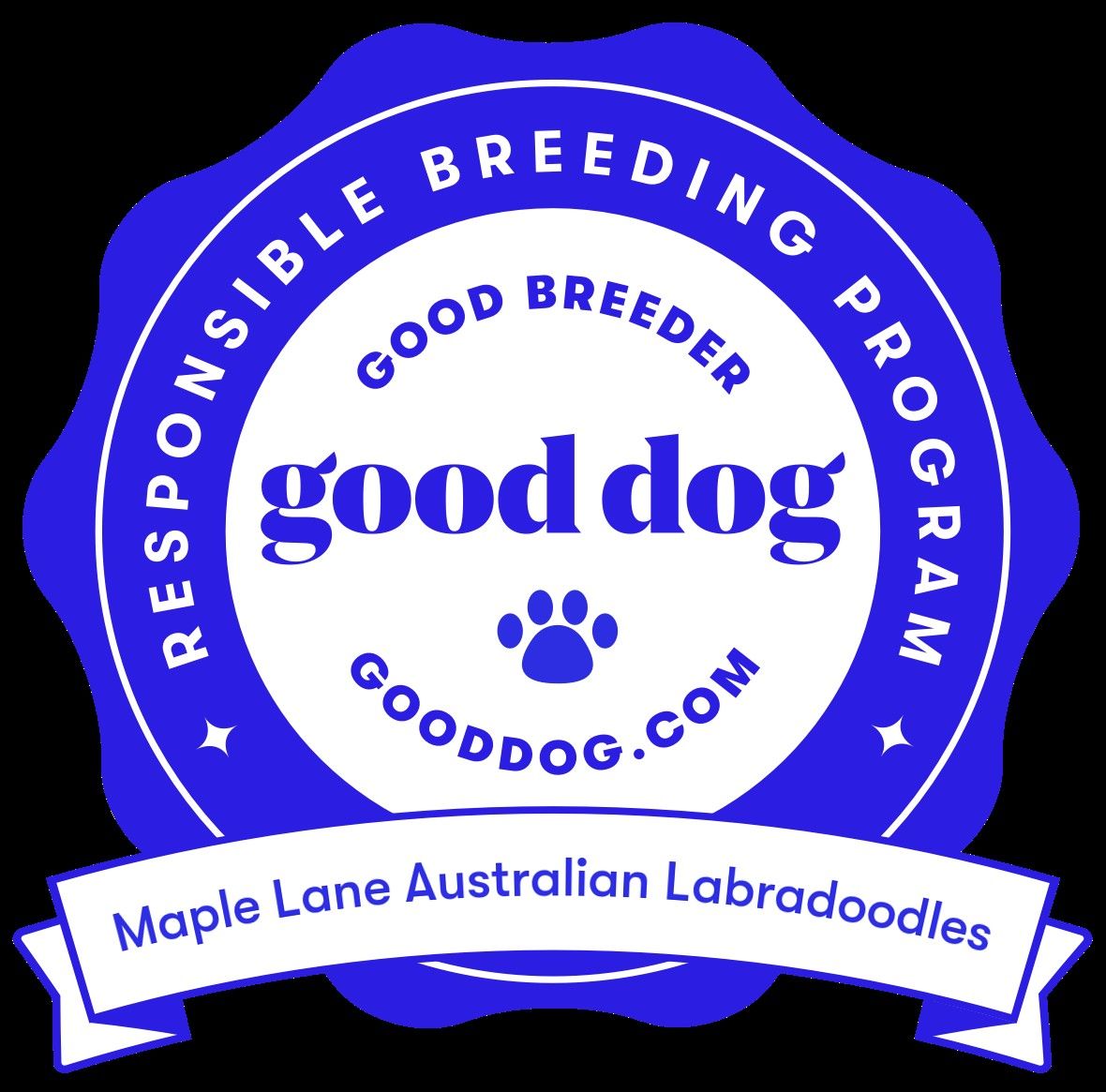The Maple Lane Blog

There are many commands that you can incorporate easily into your daily life without needing a big training regimen. The wait command is endlessly helpful in many situations and so easy to train! My favorite way is to teach it at meals. Step 1: Hold the food bowl at waist level. Ask your dog to sit and then hold up your first finger and say, “Wait.” Step 2: Begin to lower the food bowl. If pup gets up, say, “Eh-eh!” and raise the food bowl back to waist-level. Go back to Step 1. Step 3: This time, say your release word (I use, “Okay!”) as you near the point where your pup got up. Step 4: Each time you practice, try to get lower with the bowl. My goal is to eventually be able to set the bowl on the floor and have my pup look at me for the release word, waiting until I give the word to eat. I routinely use wait when we go out in the car, asking pup to sit and telling her to wait as I gather things and prepare to safely get out together. I use wait when my dogs are in another room or outside and want to come to me. I don’t like demand barking or whining. It’s a pet peeve. Between never giving in to the demand bark or whine and teaching wait, it’s very rare for my dogs to bark or whine for things.

Not all dogs like each other, just like not all people like each other, and that’s okay. They’re allowed to pick their buddies. Some dogs need time to adjust before they’re willing to play while others have never met a stranger, but how do you know if the dogs like each other? Here are some signs to watch for. Tails up, wagging and lose body posture are great signs. They might circle each other, sniffing butts (there are scent glands there that identify your dog). This is fine for a few circles, but don’t let it continue beyond a few seconds or if one dog seems uncertain or sits down. Play bows (butt up in the air, front paws extended, elbows bent, tail thumping) are how dogs say, “Let’s wrestle! And if I bite too hard, I don’t mean it!” Off-leash greetings are always better as something about the leash can spark tensions for some. You can leave the leash on in case its needed, but drop it so the dogs can interact. Stiff posture or growling are signs to back off and separate. Use a happy, cheerful voice, especially if you are concerned about how it’s going. A walk is a great introductory activity. Pups get time to indirectly get to know each other while working together toward a common goal (the walk). A gate is another way to let pups that aren’t sure about each other get to know each other. Normal play often involves standing on their hind legs, wrestling with their front legs, and biting at each other. They’ll take a break, shake it off, and start again. Yawning and shaking their bodies are ways that they lower tension and tell each other that they aren’t a threat. Dogs should always have the space to escape or take a break. Don’t punish them for needing that. A growl is a warning. Listen to their warning. Help them get out of the situation safely. Dogs whose warnings are repeatedly ignored may escalate.

Taking your dog along to a friend or family’s home for a holiday or vacation? Remember that dogs don’t generalize their knowledge well. A new environment can throw them, so here are some tips to help you prepare your dog to be a great guest! Before you go: 1. Select a word or phrase to indicate potty and start training it now. When you get to your destination, take your pup to the spot you want them to potty before heading inside. Praise and treat if they go. If they don’t, keep them close so you can get them out to potty in the right place. Don’t assume that they’ll know where potty is in a new environment just like you aren’t sure of where the bathroom is in a new place. 2. Train your pup to indicate his need to potty with bells or a doorbell and take that along. Show pup where the bells/doorbell are in the new environment and treat him for using them. 3. Ask your host if there are rooms or furniture they don’t want pup in or on. Find out if there are doors or gates that can be used to restrict pup to designated areas. Practice your pup staying on the other side of a gate from you. Train your pup to “ask” before getting on the couch. 4. If you’re driving, bring a couple of gallons of water from the water source your pup is used to, which helps prevent tummy upset. If you’re going to be there long, mix their water into yours in increasing amounts over the course of a few days. 5. Train your dog to “wait” without barking or whining. You can’t always give them attention immediately, especially when you’re in someone else’s space. Check out our blog on training this useful word and practice that at home. When you arrive: 1. Use a leash to keep your pup tethered to you for at least the first few hours. This will keep them out of mischief and help you make sure to catch early potty signs. Keep them tethered longer if they tend to chew the wrong things so you can help them learn the rules for your current location. 2. If your host has a dog or others are bringing their dog along, introduce the dogs in neutral territory. The front yard is often good for introductions to the dog that lives there. Outside is always a preferable place for introductions. Check out our blog on reading dog body language to help with introductions. 3. Ask your host if there are rooms or furniture they don’t want pup in or on. Find out if there are doors or gates that can be used to restrict pup to designated areas. 4. Treat your pup like you’re just starting potty training. Restrict his freedom and praise/treat liberally for potty in the right place and for indicating when he needs to go out.
Whether they are family pets or therapy dogs, they truly are wonderful companions. Prepare to have your heart stolen! Whether they are family pets or therapy dogs, they truly are wonderful companions. Prepare to have your heart stolen!Whether they are family pets or therapy dogs, they truly are wonderful companions. Prepare to have your heart stolen! Whether they are family pets or therapy dogs, they truly are wonderful companions. Prepare to have your heart stolen!
Fetch the Latest from the
Maple Lane Newsletter!
Stay updated on our latest, cutest, furriest arrivals!







